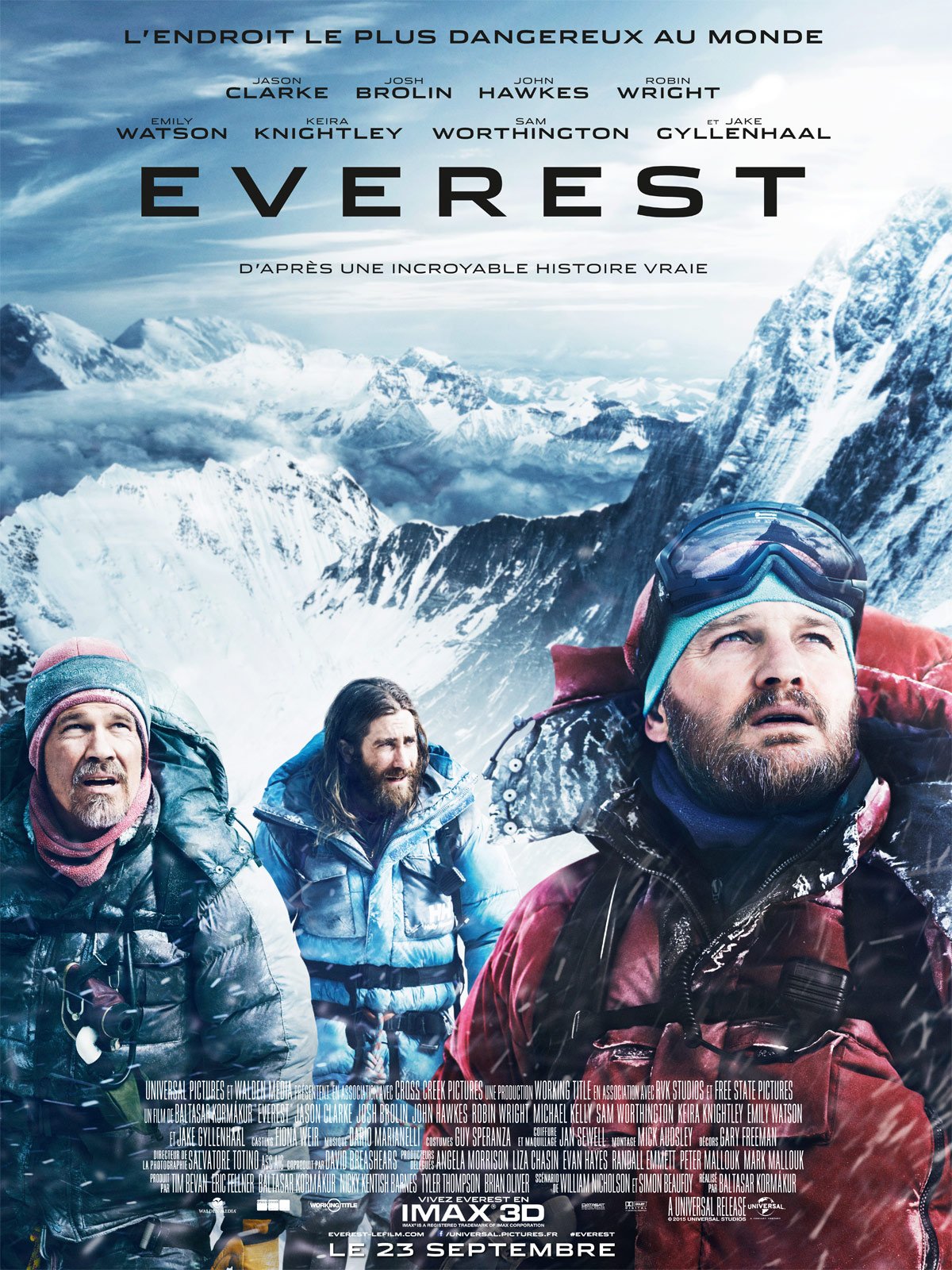
EVEREST - VIewed At the Westend Cinemas, Budapest Sunday, October 18, 2015, by Alex Deleon
Summary:
In 1996 A climbing expedition on Mt. Everest is devastated by a severe snow storm. Directed by Icelander Baltasar Kormákur (born Reykjavik 1966), a Universal release, RT 121 minutes.
Big festivals usually have big films on opening night so it is easy to see why this picture was chosen to open the 2015 Venice Film Festival. Everest is a big film that takes up a big subject -- what it takes to climb the highest mountain on earth -- in excruciating detail.
The Chinese have a wise old saying: "Shang shan rungyi, shya shan nan!" --
literally, 'Up mountain easy -- down mountain hard'-- which is what this film is basically all about.
Based on events in a book called "Left for Dead: My Journey Home From Everest" this icy breathtaker reconstructs every detail of a grueling Everest climb by an international group of adventurers that ended in disaster after the exhilirating triumph of reaching the peak -- the very top of the world! On the way back down eight of the climbers died, one by one, when a ferocious storm hit the "Death Zone" at the top of the mountain. One American survivor from Texas (Josh Brolin in the film), miraculously rescued by helicopter after being all but buried alive in the snow, had to have his hands and nose, frozen solid, amputated.
One is tempted to ask "why do people put their lives on the line just to get to the top of the tallest mountain?" -- to which englishman Edmund Hillary, the first man to reach the peak of Everest back in 1953, had a most existentialist answer: "Because it's there!"
The picture is basically divided into two interwoven parts: (1) The expedition and the climb itself with magnificent cinematography and views of the mountain from different angles at various levels --and (2) the calls back to base camp, and back home by overseas hookup to the wife of one of the climbers, and the agonized reactions of these people following the perilous mountain ascent from a safe distance below, or halfway around the world. The facial reactions of the expedition monitors are mostly in distracting full screen closeups, the wife back home mainly in bed with the lights out.
Frankly speaking, the emotional reactions back home and down below could have been eliminated entirely, or at least shortened by 90%, because all they do is detract from the drama up on the mountain and tend to reduce a powerful experience to sentimental TV type drivel.
That being said, Everest is still a fantastic movie that puts you at times so close to the snowbound action and physical struggles of the climbers that it is almost a struggle to watch. The end is particularly gruesome (and realistic!) when we watch the Brolin character huddled up against the icy mountain top to brace himself against an utterly vicious snow storm while smothering for lack of oxygen and watching parts of his body turn into black ice as he fights to survive on sheer will power alone.
The sequence with the helicopter rescue is also extremely realistic because the air at that altitude (29,000 feet above sea level) is so thin that the helicopter blades barely have enough air to bite into and the winds are deadly. The pilot is barely able to land his shaky aircraft on a tiny space being cleared away for him by hand, picks up a black faced half frozen Brolin, then nearly crashes on the lift off and swoop downward between craggy razor-sharp ridges -- zowie! -- a white knuckle watch for anybody who has ever been in a whirly bird -- (this writer, has been, a number of times! ) -- In actual fact the real helicopter rescue in 1996 was the highest a copter had ever flown.
Altogether, Everest is a remarkable screen experience that will stay with viewers long after and give new meaning to the term "mountain climbing" -- Might also pump up business at North Face outlets around the globe.